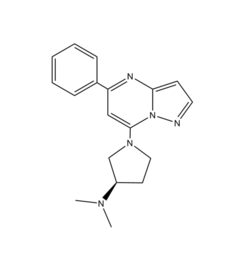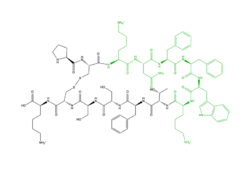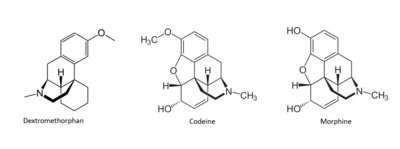Sandbox Reserved 1722
From Proteopedia
(Difference between revisions)
| Line 3: | Line 3: | ||
<StructureSection load='' size='350' frame='true' side='right' caption='MRGPRX2 7S8L' scene='90/904327/Overviewfrontpage/1'> | <StructureSection load='' size='350' frame='true' side='right' caption='MRGPRX2 7S8L' scene='90/904327/Overviewfrontpage/1'> | ||
| - | |||
| - | This is a default text for your page ''''''. Click above on '''edit this page''' to modify. Be careful with the < and > signs. | ||
| - | You may include any references to papers as in: the use of JSmol in Proteopedia <ref>DOI 10.1002/ijch.201300024</ref> or to the article describing Jmol <ref>PMID:21638687</ref> to the rescue. | ||
== G-Protein Coupled Receptors == | == G-Protein Coupled Receptors == | ||
| - | [https://proteopedia.org/wiki/index.php/G_protein-coupled_receptors G-protein coupled receptors](GCPRs) are a large family of cell surface membrane proteins. Once bound to a wide variety of extracellular ligands, GCPRs undergo a conformational change and relay information to intracellular secondary | + | [https://proteopedia.org/wiki/index.php/G_protein-coupled_receptors G-protein coupled receptors](GCPRs) are a large family of cell surface membrane proteins. Once bound to a wide variety of extracellular ligands, GCPRs undergo a conformational change and relay information to intracellular secondary messengers <ref name="Thal">Thal, David M., et al. "Structural insights into G-protein-coupled receptor allostery." Nature, Nature Publishing Group, 04 July 2018, https://www.nature.com/articles/s41586-018-0259-z</ref>. This G protein activation results in a cellular response dependent on the ligand bound and location of the GPCR in the body. GCPRs can be broken down into five families: the rhodopsin family (class A, 701 members), the secretin family (class B, 15 members), the adhesion family (24 members), the glutamate family (class C, 15 members), and the frizzled/taste family (class F, 24 members) <ref name="Zhang">PMID: 26467290</ref>. All of the families have a similar transmembrane (TM) domain consisting of seven ɑ-helices complexed with intracellular G proteins. |
== Class A GCPRs == | == Class A GCPRs == | ||
| - | Class A GPCRS or [https://en.wikipedia.org/wiki/Rhodopsin-like_receptors rhodopsin-like GPCRS] are the largest and most studied type of GPCRS. Due to the diversity of these receptors they are found in many aspects of physiology. They are characterized by conserved motifs including DRY, PIF, Sodium Binding, and the CWxP. | + | |
| + | Class A GPCRS or [https://en.wikipedia.org/wiki/Rhodopsin-like_receptors rhodopsin-like GPCRS] are the largest and most studied type of GPCRS. Due to the diversity of these receptors they are found in many aspects of physiology. They are characterized by conserved motifs including DRY, PIF, Sodium Binding, and the CWxP <ref name="Zhou">PMID: 31855179</ref>. A common example of a class A GPCRS is the β2AR receptor (PDB: 3sn6). | ||
| + | |||
=== MRGPRs === | === MRGPRs === | ||
| - | |||
| - | The human itch GPCR, or Mas-related G-protein coupled receptor (MRGPR), is a Class A GPCR found in human sensory neurons and is responsible for the sensation of “itching” caused by skin irritation and diseases, insect bites, and hypersensitivity to certain drugs. There are currently four groups consisting of MRGPRX1, MRGPRX2, MRGPRX3, and MRGPRX4. In particular, MRGPRX4 is responsible for cholestatic itch while MRGPRX2 regulates degranulation and hypersensitivity itch reactions³. These two, chiefly MRGPRX2, are often targets for drugs that result in mast cell degranulation and hypersensitivity side effects. In comparison to other Class A GPCRs, MRGPRX2 binds to an even wider range of ligands, including agonists such as; | ||
Structure with <scene name='90/904327/Overview_x2_c/1'>cortistatin</scene> | Structure with <scene name='90/904327/Overview_x2_c/1'>cortistatin</scene> | ||
Structure with <scene name='90/904328/Zinc/1'>zinc</scene> | Structure with <scene name='90/904328/Zinc/1'>zinc</scene> | ||
| - | = | + | The human itch GPCR, or Mas-related G-protein coupled receptor (MRGPR), is a Class A GPCR found in human sensory neurons and is responsible for the sensation of “itching” caused by skin irritation and diseases, insect bites, and hypersensitivity to certain drugs. There are currently four groups consisting of MRGPRX1, MRGPRX2, MRGPRX3, and MRGPRX4. In particular, MRGPRX4 is responsible for cholestatic itch while MRGPRX2 regulates degranulation and hypersensitivity itch reactions <ref name="Cao">Cao, Can, et al. "Structure, function and pharmacology of human itch GPCRs." Nature, Nature Publishing Group, 17 November 2021, https://www.nature.com/articles/s41586-021-04126-6</ref>. These two, chiefly MRGPRX2, are often targets for drugs that result in mast cell degranulation and hypersensitivity side effects. In comparison to other Class A GPCRs, MRGPRX2 binds to an even wider range of ligands, including agonists such as cations and peptides. |
| - | + | ==== Cation ==== | |
| - | + | ||
<scene name='90/904328/Ziz/1'>ZIZ</scene> | <scene name='90/904328/Ziz/1'>ZIZ</scene> | ||
| - | = | + | (R)-ZINC-3573 is a cation ligand that binds to MRGPRX2. Its N-dimethyl is inserted into a cavity of aromatic amino acid residues Phe-170, Trp-243, and Phe-244. In this cavity, it makes ion pairs with Asp-184 and Glu-164. It is then stabilized by stacking its ring with Trp-248 and the Cys-168 to Cys-180 disulfide bond <ref name="Yang">Yang, Fan, et al. "Structure, function and pharmacology of human itch receptor complexes." Nature, Nature Publishing Group, 17 November 2021, https://www.nature.com/articles/s41586-021-04077-y</ref>. |
| - | [[Image: | + | [[Image: Zinc.PNG|250px|left|thumb|'''Figure X''': Snake Plot of GCGR TMD. Residues of particular importance in glucagon binding affinity are found in green, yellow, and black. Residues in red are the location of critical disulfide bonds, while blue residues were found to be highly conserved across all class B GPCRs.]] |
| + | |||
| + | ==== Peptide ==== | ||
<scene name='90/904327/Zic14/1'>ZIC</scene> | <scene name='90/904327/Zic14/1'>ZIC</scene> | ||
| - | = | + | Cortistatin-14(structure with cortistatin) is one of the peptide ligands that binds to MRGPRX2. Cortistatin-14 interacts with the binding pocket through an electrostatic (ZIZ) interaction in sub-pocket 1 between Lys-3 on the peptide and Glu-164 and Asp-184 on MRGPRX2 <ref name="Cao"/>. Additionally, there are hydrophobic interactions in sub-pocket 2 between the peptide and the binding pocket due to the large hydrophobic amino acids on Cortistatin-14. |
| + | [[Image: Peptide.PNG|250px|right|thumb|'''Figure X''': Snake Plot of GCGR TMD. Residues of particular importance in glucagon binding affinity are found in green, yellow, and black. Residues in red are the location of critical disulfide bonds, while blue residues were found to be highly conserved across all class B GPCRs.]] | ||
| - | ==== | + | ==== Specific Traits ==== |
| - | ===== | + | ===== ''Disulfide bonds'' ===== |
| - | + | In common Class A GPCRs the disulfide bond associated with the initiation of signal transduction is located on the extracellular domain of the 7 transmembrane helices. The disulfide bond of β2AR, a well studied Class A GPCR, occurs between (TM3) C106 and (EL) C191. This loop crosses through the middle of the extracellular domain, creating a barrier for bulkier substrates. In MRGPRX2, the disulfide bond bond is located between (TM4) C168 and (TM5) C180. This is a TM to TM disulfide bond as compared to a TM to EL disulfide bond seen in typical Class A GPCRs. This lack of interaction with the extracellular loop seen in MRGPRX2 causes the extracellular loop to flip on top of the TM4 and TM5 resulting in an open space for larger substrates to be able to interact with the receptor. | |
| - | ===== | + | ===== ''Toggle Switch'' ===== |
| - | == | + | In β2AR, and other Class A GPCRs, there is a what is known as a “toggle switch” Trp-286 which puts a limit on how close the TM helices can get to each other due to tryptophan being a very large, bulky amino acid. This results in a deep binding pocket. In contrast, in MRGPRX2 Trp-286 is replaced by Gly-236 <ref name="Cao"/> <ref name="Yang"/>. Glycine is a much smaller amino acid and thus allows the helices to close the base of the binding pocket. This causes MRGPRX2 to have a very shallow binding site and consequently allows an even greater number of ligands to be able to bind. |
| - | == | + | ===== ''PIF Motif'' ===== |
| - | = | + | Another motif that MRGPRX2 differs from typical Class A GPCRs is the PIF/connector motif, which acts as a microswitch. PIF plays a role in connecting the binding pocket to conformational rearrangements required for receptor activation<ref name="Schonegge">Schonegge, Anne-Marie, et al. "Evolutionary action and structural basis of the allosteric switch controlling β2AR functional selectivity." Nature, Nature Publishing Group, 18 December 2017, https://www.nature.com/articles/s41467-017-02257-x</ref>. This motif is located towards the base of the TM domains. In a Class A GPCR, like β2AR, the PIF motif consists of Phe-211, Ile-121, and Phe-282 on TM domains 5, 3, and 6, respectively. However, for MRGPRX2, this motif is replaced with Met-196 and Leu-194 on TM5, Leu-117 on TM3, and Phe-232 on TM6. |
| - | ==== | + | ===== ''DRY Motif'' ===== |
| - | ==== | + | The DRY motif is a proton microswitch that is located near the G-protein binding site C-terminal on TM3 <ref name="Schonegge"/>. It acts as an ion lock when the GPCR is not being activated, preventing unnecessary activation of the G-proteins <ref name="Zhou"/>. This motif is conserved in typical Class A GPCRS however, in MRGPRX2 it is only partially conserved. The arginine is conserved, while the aspartate is replaced by a glutamate and the tyrosine is replaced by a cysteine <ref name="Yang"/>. |
| + | |||
| + | ===== ''Sodium Binding'' ===== | ||
| + | |||
| + | The sodium site motif is known to facilitate the conformational change of GPCR upon activation <ref name="Katritch">PMID: 24767681</ref>. A sodium molecule sits in the middle of the TM7 helices where it is stabilized by conserved residues aspartate and glycine and 3 water molecules. In MRGPRX2 this motif is only partially conserved. The aspartate (TM2) is conserved while the glycine is replaced by a serine <ref name="Yang"/>. | ||
| + | |||
| + | == MRGPRX2 Signaling Pathway == | ||
== Clinical Relevance == | == Clinical Relevance == | ||
| Line 60: | Line 65: | ||
[[Image: Drugs.PNG|400px|middle|thumb|'''Figure X''': Snake Plot of GCGR TMD. Residues of particular importance in glucagon binding affinity are found in green, yellow, and black. Residues in red are the location of critical disulfide bonds, while blue residues were found to be highly conserved across all class B GPCRs.]] | [[Image: Drugs.PNG|400px|middle|thumb|'''Figure X''': Snake Plot of GCGR TMD. Residues of particular importance in glucagon binding affinity are found in green, yellow, and black. Residues in red are the location of critical disulfide bonds, while blue residues were found to be highly conserved across all class B GPCRs.]] | ||
| - | |||
| - | |||
| - | == References == | ||
| - | |||
| - | |||
| - | |||
| - | This is a sample scene created with SAT to <scene name="/12/3456/Sample/1">color</scene> by Group, and another to make <scene name="/12/3456/Sample/2">a transparent representation</scene> of the protein. You can make your own scenes on SAT starting from scratch or loading and editing one of these sample scenes. | ||
</StructureSection> | </StructureSection> | ||
== References == | == References == | ||
<references/> | <references/> | ||
Revision as of 00:19, 29 March 2022
| This Sandbox is Reserved from February 28 through September 1, 2022 for use in the course CH462 Biochemistry II taught by R. Jeremy Johnson at the Butler University, Indianapolis, USA. This reservation includes Sandbox Reserved 1700 through Sandbox Reserved 1729. |
To get started:
More help: Help:Editing |
Human Itch GPCR
| |||||||||||
References
- ↑ Thal, David M., et al. "Structural insights into G-protein-coupled receptor allostery." Nature, Nature Publishing Group, 04 July 2018, https://www.nature.com/articles/s41586-018-0259-z
- ↑ Zhang D, Zhao Q, Wu B. Structural Studies of G Protein-Coupled Receptors. Mol Cells. 2015 Oct;38(10):836-42. doi: 10.14348/molcells.2015.0263. Epub 2015, Oct 15. PMID:26467290 doi:http://dx.doi.org/10.14348/molcells.2015.0263
- ↑ 3.0 3.1 Zhou Q, Yang D, Wu M, Guo Y, Guo W, Zhong L, Cai X, Dai A, Jang W, Shakhnovich EI, Liu ZJ, Stevens RC, Lambert NA, Babu MM, Wang MW, Zhao S. Common activation mechanism of class A GPCRs. Elife. 2019 Dec 19;8. pii: 50279. doi: 10.7554/eLife.50279. PMID:31855179 doi:http://dx.doi.org/10.7554/eLife.50279
- ↑ 4.0 4.1 4.2 Cao, Can, et al. "Structure, function and pharmacology of human itch GPCRs." Nature, Nature Publishing Group, 17 November 2021, https://www.nature.com/articles/s41586-021-04126-6
- ↑ 5.0 5.1 5.2 5.3 Yang, Fan, et al. "Structure, function and pharmacology of human itch receptor complexes." Nature, Nature Publishing Group, 17 November 2021, https://www.nature.com/articles/s41586-021-04077-y
- ↑ 6.0 6.1 Schonegge, Anne-Marie, et al. "Evolutionary action and structural basis of the allosteric switch controlling β2AR functional selectivity." Nature, Nature Publishing Group, 18 December 2017, https://www.nature.com/articles/s41467-017-02257-x
- ↑ Katritch V, Fenalti G, Abola EE, Roth BL, Cherezov V, Stevens RC. Allosteric sodium in class A GPCR signaling. Trends Biochem Sci. 2014 May;39(5):233-44. doi: 10.1016/j.tibs.2014.03.002. Epub , 2014 Apr 21. PMID:24767681 doi:http://dx.doi.org/10.1016/j.tibs.2014.03.002



